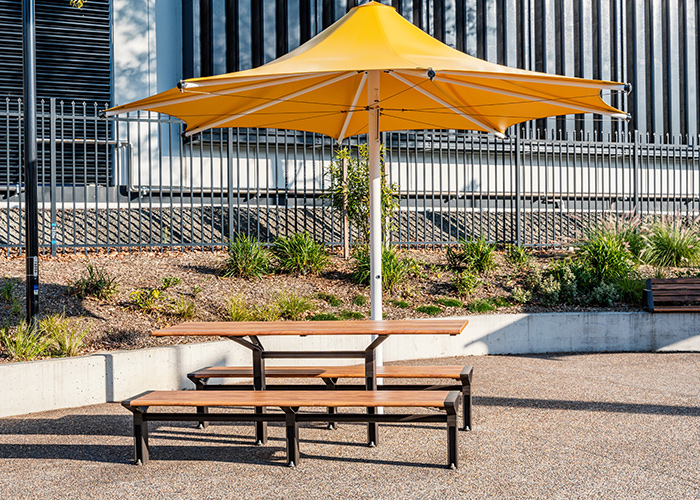Street Furniture Australia recently interviewed Ellen Naismith, Access Consultant to find out the latest recommendations around the Disability Discrimination Act (DDA) and accessibility for street furniture products
Ellen explains, “accessibility is a high-priority design consideration for public spaces in Australia, but it is also often misunderstood, and the needs of users may differ widely between projects”.
Architecture & Access is the largest access consultancy in Australia. The practice refers to the principles of universal design, which aim to make the built environment usable by all people in the community, regardless of their age or ability.
1. What is the main key to designing accessible spaces?
‘Spaces’ include existing infrastructure (indoor and outdoor), and temporary infrastructure provided for festivals and events. For any space to be truly inclusive, it should be designed with the needs of all users in mind. Designing accessible spaces should be considered by everyone. Accessible spaces are an integral part of an inclusive community. However, what provides good access for some, may in fact be a barrier to others.
Therefore, our tip for designing an accessible space is to observe the location and consult with the stakeholders to fully understand how the space is used and the specific access needs of the people who will use it. The diverse needs of the user group should mould the design.
2. Can you talk us through the different ways picnic settings can adhere to DDA?
In Australia the Disability Discrimination Act 1992 (Cth.), known as the DDA, currently does not mandate any specific requirements for furniture. However, we have applied the knee and foot clearance requirements for accessible bathroom washbasins and the specifications outlined in AS1428.2 (Design for access and mobility Part 2: Enhanced and additional requirements—Buildings and facilities) to advise Street Furniture Australia how accessible picnic tables can provide the greatest access to a range of users with mobility disability.
A number of organisations, including local councils, have installed picnic tables with a wheelchair seating space at the side, however Architecture & Access do not recommend this arrangement as it reduces the seating capacity of the table. While a side-approach can send a message to the community that providing a dedicated space for wheelchair users is important, it limits the use of the table. End access provides wheelchair access to both the ends of the table, allowing both sides to be fully utilised by a diverse range of people, including people who have ambulant disability. By providing end approach wheelchair seating spaces, the tables are able to meet the needs of more people.

The accessibility of a picnic table also relies on the path to and around the table itself. When installing a picnic table that includes wheelchair seating spaces, it is vital that a traversable path is provided to it – with a trip-free surface and shallow gradients, and enough circulation space is provided at the wheelchair seating side of the table – to enable a wheelchair user to manoeuvre into position. Therefore, the direction of approach and the existing paths are important factors to consider when designing accessible picnic areas.
People often forget that accessibility is not all about wheelchairs. People who can walk but may require some support to sit down and get back up, may find bench-style seating uncomfortable and difficult to use. Therefore, the provision of backrests and armrests on a proportion of the picnic table seats will support a wider range of users, including older people and people with ambulant disability.
3. Is it vital to adhere to AS1428.2?
AS1428.2 1992 is not referenced by the National Construction Code (NCC) except for Transport buildings. However, the standard provides vital requirements and recommendations for how the spaces and furniture should be designed in accordance with human anthropometry. While the information provided in AS1428.2 are only recommendations, they have been developed to cater to the needs of people with a diverse range of disability, therefore it is important to consider these when designing furniture and joinery.
4. Are there any conflicts between AS1428.2 and the DDA?
The intent of the DDA is to ensure that equal and dignified access is provided to work, services, employment and education for people with disability – and that barriers to access are against the law. The National Construction Code sits beneath the DDA and references AS1428.1. The Australian Standards provide the technical details regarding how access to the built environment can be achieved.
Street Furniture Australia designs and manufactures furniture for the public realm. Their mission is to bring enjoyment to all those who create, build, maintain and use public places.
